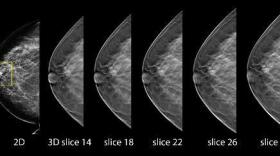Losing an arm or leg is devastating, and replacing that missing limb with a prosthetic can be expensive. 3D printing is making it easier to create useable prosthetics quickly and much more cheaply.
Todd Dombroski heads the Biomechanical Medicine Clinic at the UNT Health Science Center in Fort Worth.
Interview Highlights
On 3D printing vs. standard prosthetics
If you're a little kid and you want to throw a baseball or you want to play hockey, you can't do that with a $50,000 arm because you can't get it wet, you can't get it dirty, and mom is scared if you break it. It's $50,000, and insurance companies don't always pay for a lot of that. So, we're not trying to be the cutting edge, we're actually trying to fill the gap of, 'OK, there's this great hand that can help feed you, help do personal hygeine, write a letter. But now how do you do some other harder things, like sports?'
On 3D printing changing the industry
I've got a young man who could not ride his bike, he couldn't play hockey, he couldn't throw a baseball, he couldn't be with his buddies. He is six years old. They told him, 'No, you can't ride your bike, you'll get hurt.' How do you tell a little kid that?
So, his mom isn't going to let him use his $50,000 prosthetic. So with 3D printing, we build him one just for playing hockey. It is a square hand. We build him one that he can through a baseball with -- it looks like a big scoop. We build him one for riding his bike that has a little c-clamp on it that he can unclamp and clamp and he won't get run over by his other buddies. He can go jump and be a kid and get dirty and filthy. And you can't break the thing, for the most part, because sometimes you put carbon fiber in the plastic itself.
On the versatility of 3D printed prosthetics
With new materials, I can actually start to print copper wires within the plastic, to look at different interfaces with the motors. Most people, because of new hand technology — the [prosthetic] hand looks pretty close to your other hand — they wear it for cosmetic as well as functional purposes, on the high end side. Mine is just for specific activities, where it gets dirty, where you need durability and, if it breaks or you lose it or whatever, we just hit the print button and overnight it comes out and — here you go.
Interview responses have been lightly edited for clarity and length.







